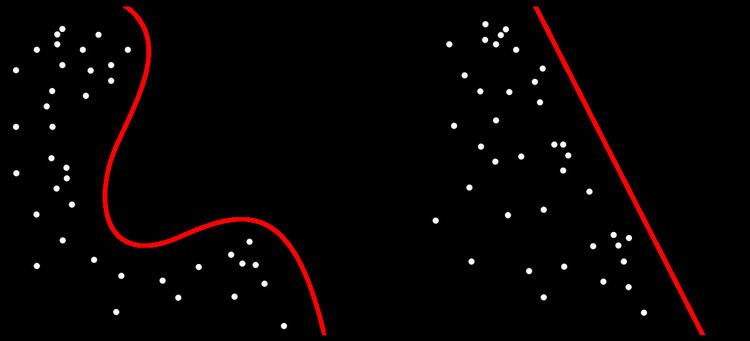Developer(s) various | Development status Active | |
 | ||
Original author(s) Stable release 0.7.2 / 24 December 2016; 2 months ago (2016-12-24) Repository github.com/deeplearning4j/deeplearning4j | ||
Deeplearning4j is a deep learning programming library written for Java and the Java virtual machine (JVM) and a computing framework with wide support for deep learning algorithms. Deeplearning4j includes implementations of the restricted Boltzmann machine, deep belief net, deep autoencoder, stacked denoising autoencoder and recursive neural tensor network, word2vec, doc2vec, and GloVe. These algorithms all include distributed parallel versions that integrate with Apache Hadoop and Spark.
Contents
- Introduction
- Distributed
- Scientific computing for the JVM
- DataVec vectorization library for machine learning
- Text and NLP
- Real world use cases and integrations
- Benchmarks
- API Languages Java Scala Python and Clojure
- Related libraries
- References
Deeplearning4j is open-source software released under Apache License 2.0, developed mainly by a machine learning group in San Francisco led by Adam Gibson. It has been called "the most accessible, powerful and well-documented DL framework for a static-typed" language. It is supported commercially by the startup Skymind.
Introduction
Deeplearning4j relies on the widely used programming language, Java, though it is compatible with Clojure and includes a Scala application programming interface (API). It is powered by its own open-source numerical computing library, ND4J, and works with both central processing units (CPUs) and graphics processing units (GPUs).
Deeplearning4j has been used in several commercial and academic applications. The code is hosted on GitHub. A support forum is maintained on Gitter.
The framework is composable, meaning shallow neural nets such as restricted Boltzmann machines, convolutional nets, autoencoders, and recurrent nets can be added to one another to create deep nets of varying types. It also has extensive visualization tools, and a computation graph.
Distributed
Training with Deeplearning4j occurs in a cluster. Neural nets are trained in parallel via iterative reduce, which works on Hadoop-YARN and on Spark. Deeplearning4j also integrates with CUDA kernels to conduct pure GPU operations, and works with distributed GPUs.
Scientific computing for the JVM
Deeplearning4j includes an n-dimensional array class using ND4J that allows scientific computing in Java and Scala, similar to the functions that NumPy provides to Python. It's effectively based on a library for linear algebra and matrix manipulation in a production environment.
DataVec vectorization library for machine-learning
DataVec vectorizes various file formats and data types using an input/output format system similar to Hadoop's use of MapReduce; that is, it turns various data types into columns of scalars termed vectors. DataVec is designed to vectorize CSVs, images, sound, text, video, and time series.
Text and NLP
Deeplearning4j includes a vector space modeling and topic modeling toolkit, implemented in Java and integrating with parallel GPUs for performance. It is designed to handle large text sets.
Deeplearning4j includes implementations of term frequency–inverse document frequency (tf–idf), deep learning, and Mikolov's word2vec algorithm, doc2vec, and GloVe, reimplemented and optimized in Java. It relies on t-distributed stochastic neighbor embedding (t-SNE) for word-cloud visualizations.
Real-world use cases and integrations
Real-world use cases for Deeplearning4j include fraud detection for the financial sector, anomaly detection in industries such as manufacturing, recommender systems in e-commerce and advertising, and image recognition. Deeplearning4j has integrated with other machine-learning platforms such as RapidMiner and Prediction.io.
Benchmarks
Deeplearning4j is as fast as Caffe for non-trivial image recognition tasks using multiple GPUs. For programmers unfamiliar with HPC on the JVM, there are several parameters that must be adjusted to optimize neural network training time. These include setting the heap space, the garbage collection algorithm, employing off-heap memory and pre-saving data (pickling) for faster ETL. Together, these optimizations can lead to a 10x acceleration in performance with Deeplearning4j.
API Languages: Java, Scala, Python and Clojure
Deeplearning4j can be used via multiple API languages including Java, Scala, Python and Clojure. Its Scala API is called ScalNet. Keras serves as its Python API. And its Clojure wrapper is known as DL4CLJ. The core languages performing the large-scale mathematical operations necessary for deep learning are C, C++ and CUDA C.
